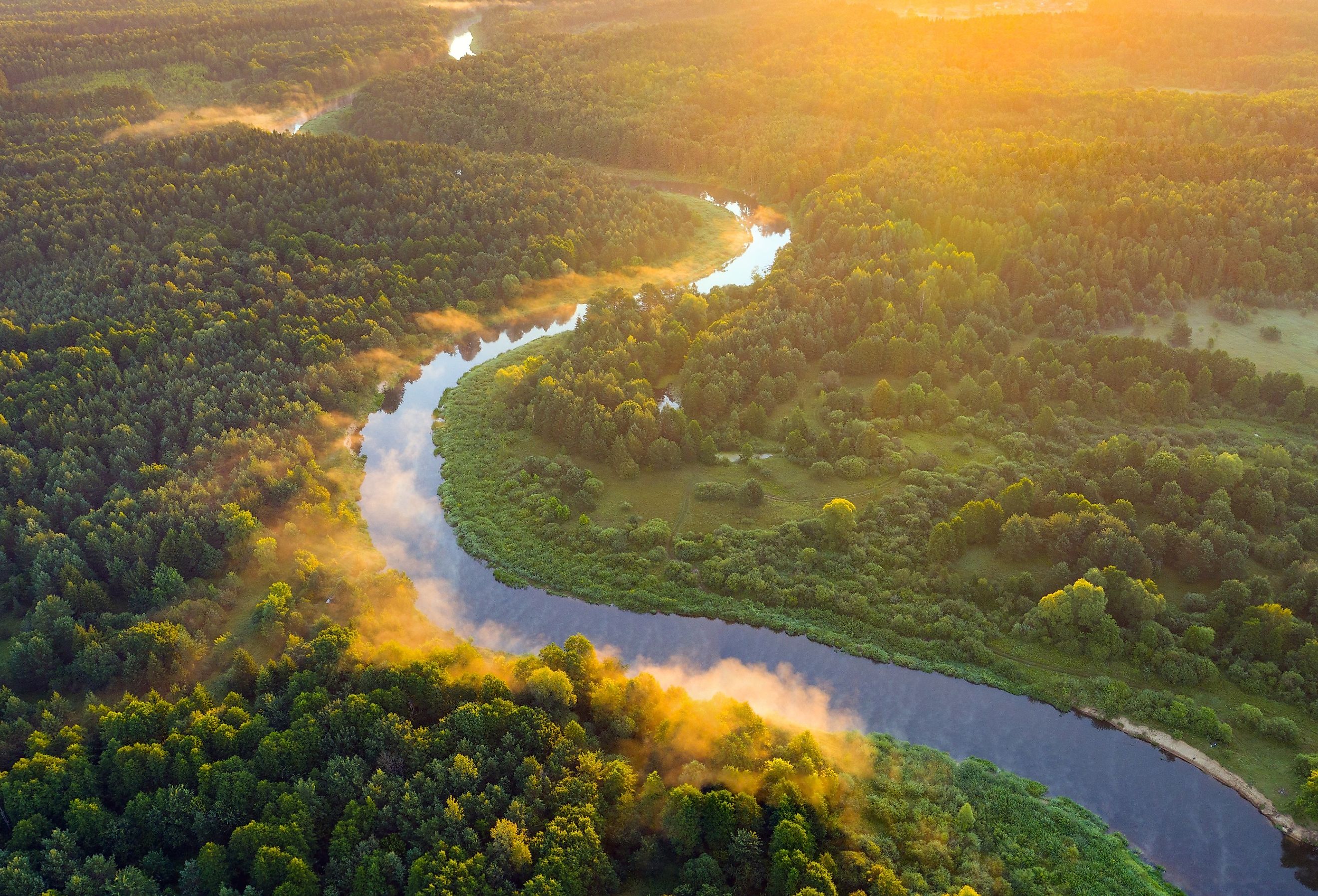
Berezina River
The Berezina River, sometimes spelled Biarezina River, is a Belarusian tributary river that feeds into the Dnieper River and is the 7th largest river in Belarus. From its source in the Berezinsky Biosphere Reserve, a wildlife reserve in Belarus, it flows for 381 miles before meeting the Dnieper near Rechytsa, Belarus. It has a drainage basin of 9,450 square miles and flucates in width between an average of 60 feet to a maximum of 196 feet. It has a maximum of depth of around 22 feet, but is between 4 and 7 feet deep on average. The Berezina has been an important river throughout eastern European history, both ecologically and politically.
Source and Tributaries
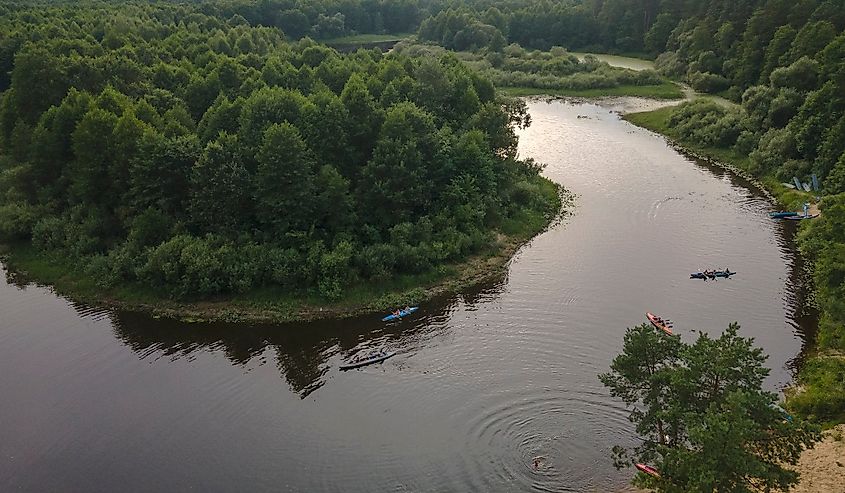
Amongst the marshes and peatbogs of the Vitebsk region of Belarus is the source of the Berezina River. These marshes are among the previously mentioned Berezinsky Biosphere Preserve. As the Berezina flows south towards the Dnieper, it is fed by many tributary rivers. From the left side, the Bobr River, Klyava River, Ala River. Ol'sa river feed the Berezina and from the right the Hanya River and Svislach River, the Svislach being the longest of the Berezina's tributaries at 203 miles long. The source and tributaries are all either primarily or entirely within the boundaries of Belarus.
Course of the Berezina
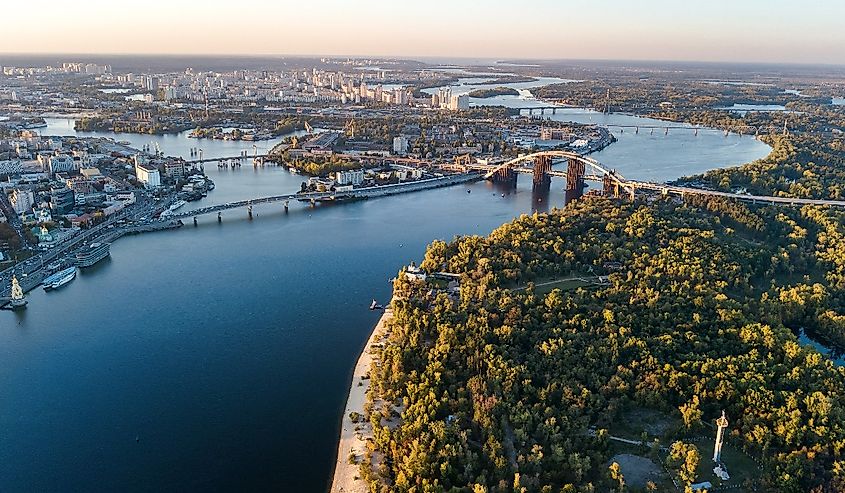
From the Berezinsky Biosphere Reserve, it flows south and alongside the first major settlement, Dokshytsy. The small town is only a kilometer away from the source of the Berezina. As the river flows south, it passes through important settlements, Barysau (Borisov) and Babruysk (Bobruisk). The Berezina continues through the Gomel Region of the Belarus before passing the village of Beregovaya Sloboda, where it soon after drains into the Dnieper. Unlike many rivers in the region, it has a relatively simple course.
Climate and Wildife
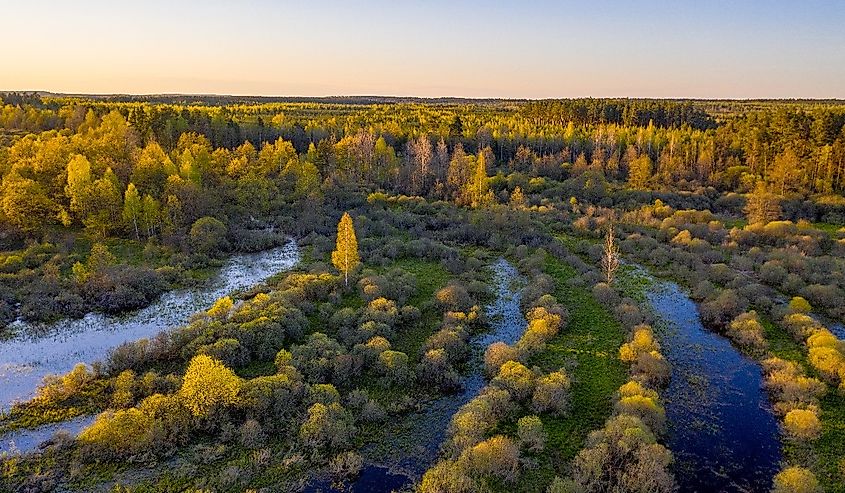
The climate of the river's region is humid temperate, meaning the area has a four season cycle and a variety of temperatures as the seasons shift, but it also has high humidity and precipitation. The average yearly rainfall for the area is 690mm/year. The land around the river is mostly deciduous forests, coniferous forests, and peatbogs alongside small numbers of lakes and small fields. The majority of the Berezina's banks are covered in forest and are generally steep. There are over 2,000 species of plants in the river area, including 42 rare plants. The forests are full of pine, spruce, oak, ash, and birch among many other rarer trees. There are also 56 species of mammals and over 230 species of birds, many living among the marshes and peatbogs of the river area. The most impressive of the animals in this area are brown bears, European bison, Eurasian lynxes, and European badger, as well as martens, elk, deer and many other common European mammals. Two of the rarest European bird species, the Eurasian bittern and corn crake, can also be found in the Berezina area.
Historical Importance
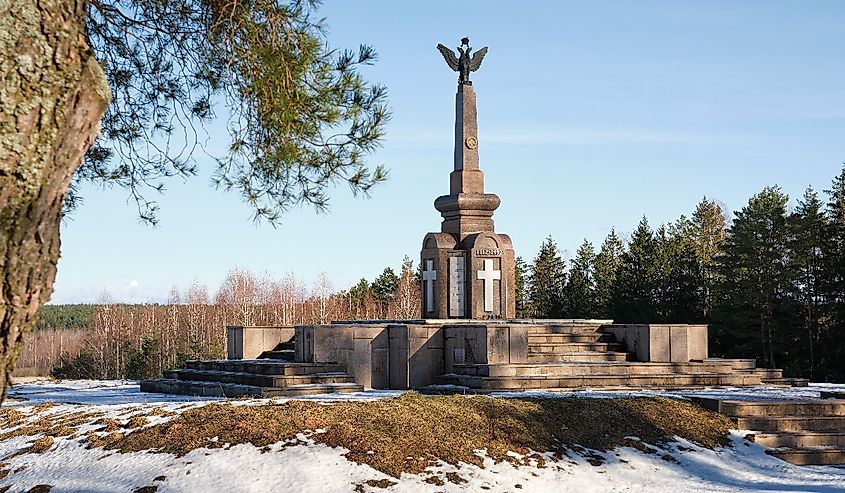
While the Berezina has been settled on and near for milennia, the most important events in the river's history have to do with the defense of Russia, which Belarus was apart of for centuries. In 1812, as Napoleon and the remnants of his army retreated from Moscow to escape the Russian winter, they came to the Berezina River. As the French army attempted to cross the river, they were attacked by the enclosing Russian army of General Wittgenstein at the Battle of the Berezina River. Though Napoleon managed to escape and the crossing was completed, the French suffered horrendous losses, some 50,000 men in total. The Russians lost only around 10,000 men. 132 years later, during the Second World War, the German army would be trapped against the banks of the Berezina during Operation Bagration, the Soviet summer offensive in 1944. Huge portions of the German Army Group Centre were destroyed or captured in the river area. This battle, alongside previous battles in the First and Second World War, contributed to many animals in the region almost going extinct. Thankfully, most have recovered in the years of relative peace since.











